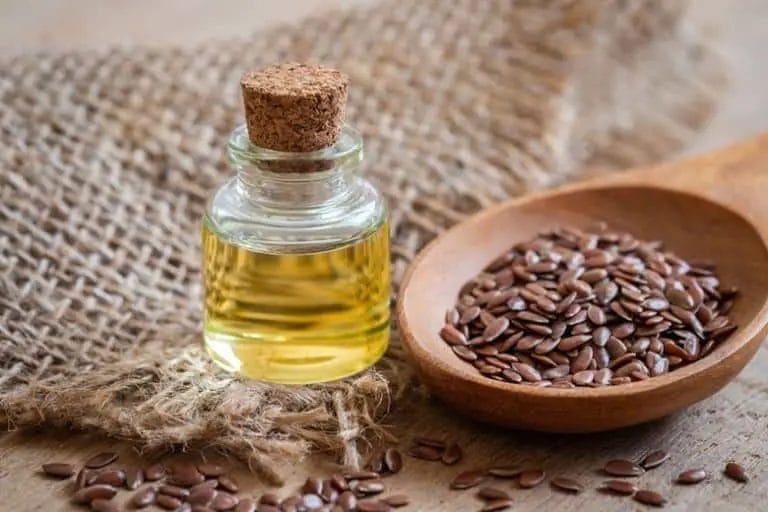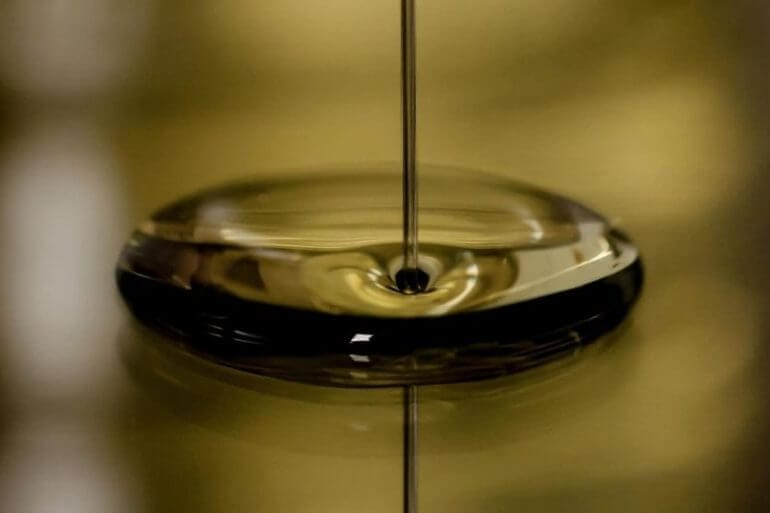When it comes to protecting and enhancing the beauty of wood, linseed oil is a popular choice. But how long does linseed oil last on wood?
The longevity of linseed oil on wood depends on various factors such as the type of wood, application method, and environmental conditions. Generally, linseed oil can last for several months to a few years on wood surfaces.

However, it’s important to note that linseed oil is not a permanent finish and may require reapplication over time to maintain its protective and aesthetic benefits.
Factors such as exposure to sunlight, moisture, and wear can impact the durability of linseed oil. Regular maintenance and reapplication can help extend its lifespan and keep your wood surfaces looking their best.
Ultimately, the longevity of linseed oil on wood is influenced by the specific circumstances and level of care provided to the wood surfaces.
Consulting a professional or following manufacturer recommendations can provide further guidance on the appropriate application and maintenance of linseed oil for your specific wood projects.

Factors Affecting the Lifespan of Linseed Oil on Wood
Linseed oil is a popular choice for preserving and protecting wood surfaces. It is a natural oil derived from flaxseed and has been used for centuries to seal and nourish wooden furniture, flooring, and other wooden structures. However, the lifespan of linseed oil on wood can vary depending on several factors. In this section, we will discuss these factors in detail to understand how they can affect the longevity of linseed oil on wood.
1. Quality of Linseed Oil
The quality of linseed oil plays a significant role in determining how long it will last on wood. High-quality, pure linseed oil tends to have better durability and longevity compared to lower-quality options. When purchasing linseed oil, it is crucial to select a reputable brand known for its superior quality. This ensures that the oil has been properly processed and contains minimal impurities that could affect its performance.
2. Wood Type and Condition
The type of wood being treated with linseed oil can impact its lifespan. Different wood species have varying levels of porosity, density, and natural resistance to decay. Hardwoods, such as oak or teak, are generally more resistant to moisture and aging, making linseed oil last longer on these surfaces. On the other hand, softwoods like pine or cedar may require more frequent reapplication of linseed oil due to their higher susceptibility to moisture damage.
In addition to the wood species, the condition of the wood also plays a role. If the wood is already damaged, rotted, or has cracks, linseed oil may not adhere properly or provide adequate protection. It is essential to inspect and properly prepare the wood surface before applying linseed oil to ensure optimal results.
3. Application Technique
The way linseed oil is applied onto the wood can greatly affect its lifespan. Proper application techniques ensure even coverage and penetration into the wood fibers, resulting in a more durable finish. It is important to follow the manufacturer’s instructions for application, which usually involve cleaning the surface, applying thin coats, and allowing proper drying time between coats.
Some experts recommend applying linseed oil in multiple thin coats rather than one thick coat. This allows the oil to penetrate deeper into the wood and provides better protection against moisture and UV damage. Additionally, using a brush or cloth to apply the linseed oil allows for better control and ensures that the oil reaches all areas of the wood.
4. Exposure to Environmental Factors
The longevity of linseed oil on wood can also be influenced by environmental factors. Exposure to sunlight, moisture, temperature fluctuations, and other environmental elements can cause the oil to degrade over time. Wood surfaces that are constantly exposed to harsh conditions may require more frequent reapplication of linseed oil to maintain their protective barrier.
To minimize the impact of environmental factors, it is advisable to use linseed oil on wood surfaces that are sheltered or protected from direct sunlight and excessive moisture. Regular cleaning and maintenance of the wood can also help prolong the lifespan of linseed oil by preventing the accumulation of dirt, grime, and other contaminants.
5. Maintenance and Reapplication
Regular maintenance and reapplication of linseed oil are essential to ensure its long-lasting effects on wood. Over time, the oil may wear off or become less effective in providing adequate protection. Therefore, it is recommended to periodically inspect the wood surfaces and assess whether reapplication is necessary.
The frequency of reapplication depends on various factors such as the quality of linseed oil, wood type, environmental conditions, and the level of wear and tear. Generally, it is advisable to reapply linseed oil every 1-3 years or as needed to maintain the wood’s appearance and protection.
Summary
Several factors affect the lifespan of linseed oil on wood. The quality of the oil, type and condition of the wood, application technique, exposure to environmental factors, and regular maintenance and reapplication all play a role in determining how long linseed oil will last on wood surfaces. By considering these factors and taking appropriate measures, it is possible to maximize the lifespan and effectiveness of linseed oil in preserving and protecting wood.

How to Properly Apply and Maintain Linseed Oil on Wood
Linseed oil is a natural and popular choice for enhancing the beauty and longevity of wooden surfaces. This versatile oil provides a protective coat that helps to preserve the wood’s natural character and prevent it from drying out. In this section, we will guide you through the process of properly applying and maintaining linseed oil on wood.
1. Preparation
Before applying linseed oil, it is important to prepare the wood surface properly. Start by cleaning the wood to remove any dirt, dust, or previous coatings. You can use a mild detergent or wood cleaner and a soft brush or cloth for this purpose. Once the wood is clean, allow it to dry completely.
2. Choosing the Right Linseed Oil
Linseed oil is available in two forms: raw and boiled. Raw linseed oil takes longer to dry and is suitable for surfaces that are not exposed to water or heavy wear. Boiled linseed oil, on the other hand, has drying agents added to it, which speeds up the drying process. It is ideal for surfaces that require faster drying times, such as wooden furniture or floors.
3. Applying Linseed Oil
Start by pouring a small amount of linseed oil into a separate container to avoid contaminating the original bottle. Use a clean cloth or brush to apply the linseed oil evenly onto the wood surface. Apply the oil in thin, even coats, working with the grain of the wood. Avoid applying excessive oil, as it may lead to a sticky or tacky finish.
Allow the first coat of linseed oil to penetrate the wood for about 15-20 minutes before wiping off any excess oil with a clean cloth. This step helps to prevent an uneven or blotchy appearance. Repeat the process for additional coats, allowing each coat to dry completely before applying the next. Depending on the desired finish and wood type, you may need to apply multiple coats.
4. Drying and Curing
After applying the final coat of linseed oil, allow the wood to dry and cure. The drying time may vary depending on the type of linseed oil used and environmental conditions. It is recommended to let the wood dry for at least 24-48 hours in a well-ventilated area.
During the curing process, avoid placing any objects or heavy items on the wood surface to prevent unwanted marks or imprints. The oil will continue to harden and cure over the next few weeks, providing a durable and protective finish.
5. Maintenance
To maintain the beauty and longevity of the wood, regular maintenance is essential. Here are some tips:
- Keep the wood clean by dusting or wiping it with a soft cloth regularly.
- Avoid using harsh chemical cleaners or abrasive materials, as they can damage the linseed oil finish.
- If the wood surface starts to appear dry or dull, apply a thin coat of linseed oil to rejuvenate it. Wipe off any excess oil and allow it to dry.
- Protect the wood from excessive heat, direct sunlight, and moisture to prevent warping or discoloration.
- Inspect the wood periodically for any signs of wear or damage. Touch up the areas as needed with a small amount of linseed oil.
By following these steps and practicing proper maintenance, you can ensure that linseed oil continues to enhance the natural beauty of your wood surfaces for years to come.

Signs that Linseed Oil Needs to be Reapplied on Wood
Linseed oil is a popular choice for protecting and enhancing the beauty of wood. It is a natural oil that penetrates deep into the wood fibers, providing a protective barrier against moisture and preserving the natural color and grain of the wood. However, over time, linseed oil can wear off or become less effective. Here are some signs that indicate it may be time to reapply linseed oil on wood:
- Loss of shine: One of the first signs that linseed oil needs to be reapplied is a loss of shine on the wood surface. Over time, exposure to sunlight, dust, and other environmental factors can cause the oil to dull or fade. If the wood no longer has a lustrous appearance, it is a good indication that it needs a fresh coat of linseed oil.
- Dryness and roughness: As linseed oil ages, it may start to lose its moisturizing properties. This can result in the wood feeling dry and rough to the touch. If you notice that the wood has lost its smoothness and feels parched, it is a clear sign that the linseed oil needs to be reapplied to restore moisture and softness.
- Fading of color: Linseed oil is known for enhancing the natural color and richness of wood. However, prolonged exposure to sunlight and other elements can cause the oil to break down and fade. If you notice that the color of the wood has become dull or washed out, it is a strong indication that the linseed oil needs to be reapplied to rejuvenate the color and bring back the wood’s vibrancy.
- Lack of water resistance: One of the major benefits of linseed oil is its ability to protect wood against moisture damage. However, as the oil wears off or deteriorates, the wood may become more susceptible to water penetration. If you observe that water droplets are no longer beading up on the surface of the wood and instead are being absorbed, it is a clear sign that the linseed oil needs to be reapplied to regain its water-resistant properties.
- Increased susceptibility to scratches and stains: Linseed oil helps to create a protective layer on the wood surface, making it more resistant to scratches, stains, and general wear and tear. However, as the oil deteriorates, the wood may become more vulnerable to damage. If you notice an increase in scratches, stains, or signs of wear on the wood, it is a strong indication that the linseed oil needs to be reapplied to restore its protective qualities.
In summary, linseed oil is a great choice for protecting and beautifying wood surfaces. However, over time, it may become less effective and show signs of wear. Loss of shine, dryness, fading of color, lack of water resistance, and increased vulnerability to scratches and stains are all indicators that linseed oil needs to be reapplied on wood. By regularly maintaining and reapplying linseed oil, you can ensure that your wood surfaces remain protected, nourished, and visually appealing for years to come.
5. Alternatives to Linseed Oil for Long-lasting Wood Protection
Linseed oil has long been a popular choice for protecting wood due to its natural properties and ability to penetrate deep into the wood fibers. However, there are several alternatives available that offer similar or even superior protection. In this section, we will explore some of these alternatives and their benefits.
1. Tung Oil
Tung oil is extracted from the seeds of the tung tree and has been used for centuries as a wood finish. It offers excellent water resistance and provides a durable, long-lasting finish. Tung oil also enhances the natural beauty of wood by bringing out the grain and adding depth to the color. It is easy to apply and dries quickly, making it a popular alternative to linseed oil.
2. Danish Oil
Danish oil is a blend of various oils and resins that provide excellent protection for wood. It is easy to apply and creates a durable, water-resistant finish. Danish oil also enhances the natural beauty of wood by adding depth and richness to the color. It is available in different sheens, allowing you to achieve the desired level of gloss or matte finish.
3. Teak Oil
Teak oil is specifically designed for protecting and enhancing the beauty of teak wood. It provides excellent protection against moisture, UV rays, and general wear and tear. Teak oil penetrates deeply into the wood, nourishing it from within and helping to prevent cracking and splitting. It leaves a rich, warm finish that accentuates the natural grain of teak wood.
4. Polyurethane Varnish
Polyurethane varnish is a popular alternative to linseed oil for those looking for a tough, protective finish. It forms a hard, durable film on the surface of the wood, providing excellent resistance to water, chemicals, and abrasion. Polyurethane varnish is available in different sheens and can be applied with a brush or spray. It provides a clear finish that enhances the natural beauty of the wood.
5. Shellac
Shellac is a natural resin that is derived from the secretions of the lac beetle. It has been used for centuries as a wood finish and offers excellent protection against moisture, heat, and scratches. Shellac creates a glossy finish that brings out the depth and richness of the wood. It is easy to apply and dries quickly, making it a convenient option for wood protection.
When choosing an alternative to linseed oil for wood protection, it is important to consider factors such as the type of wood, desired finish, and level of protection required. Each alternative has its own unique properties and benefits, so it is recommended to test the product on a small, inconspicuous area before applying it to the entire surface.
In summary, while linseed oil has been a popular choice for wood protection, there are several alternatives available that offer similar or even better results. Tung oil, Danish oil, teak oil, polyurethane varnish, and shellac are just a few examples of alternatives that provide durable, long-lasting protection while enhancing the natural beauty of wood.
FAQs
How long does linseed oil last on wood?
The durability of linseed oil on wood depends on various factors such as the type of wood, application method, and environmental conditions. Generally, linseed oil can protect wood for a few years before needing to be reapplied. However, regular maintenance and reapplication may be needed to ensure optimal protection and appearance.
Conclusion:
In conclusion, the longevity of linseed oil on wood largely depends on various factors. While linseed oil can provide a beautiful and natural finish to wood, its durability can be affected by exposure to sunlight, moisture, and wear. With proper application and regular maintenance, linseed oil can protect and enhance the natural beauty of wood for a considerable amount of time.
However, it’s essential to note that linseed oil is not as long-lasting as other types of wood finishes, such as varnishes or lacquers. Therefore, if you’re looking for a highly durable and long-lasting option, considering alternative finishes might be a better choice.